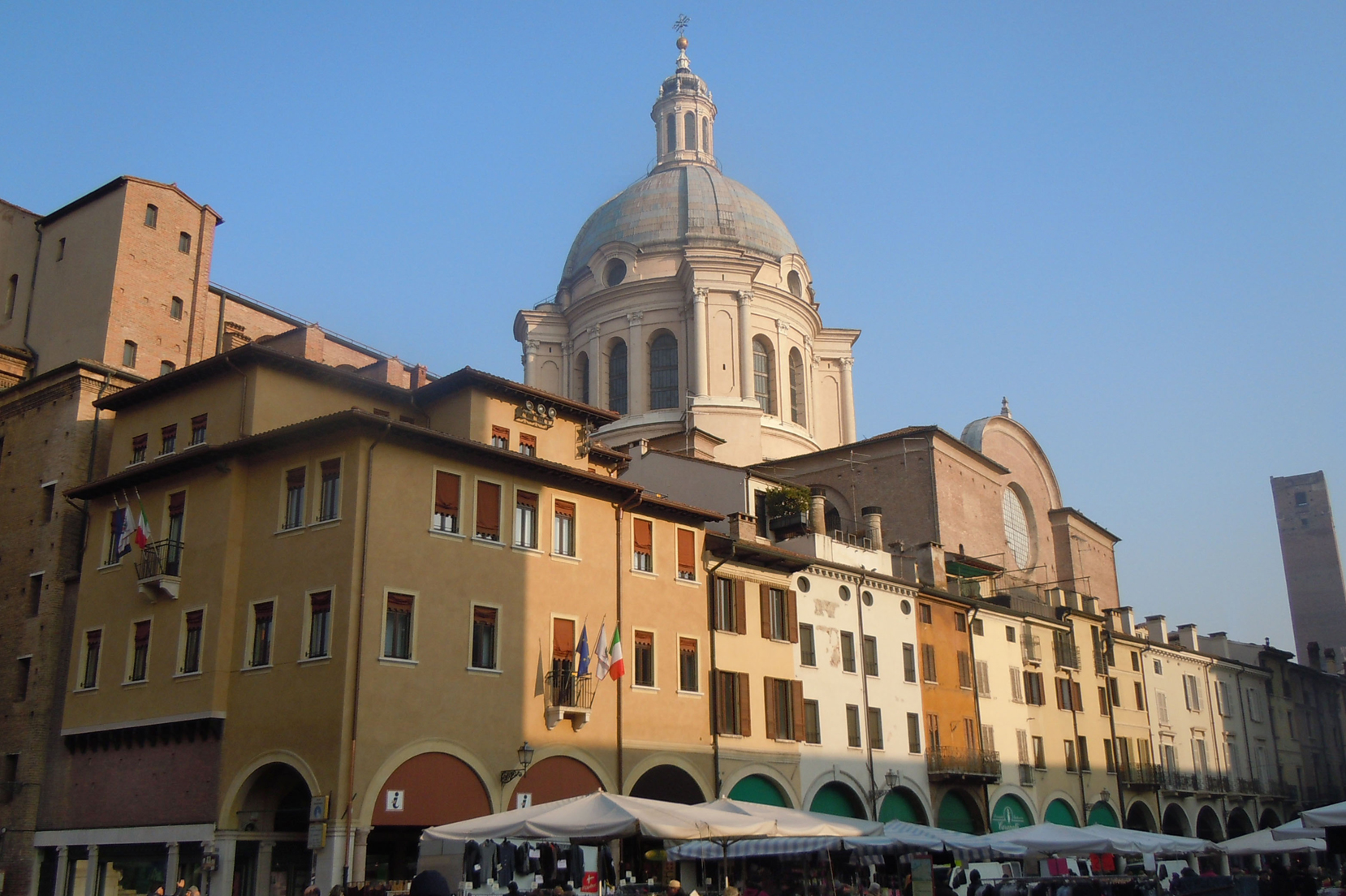The "Via Matildica del Volto Santo" is a journey of great beauty for its natural landscapes and its historical heritage. The itinerary crosses three regions and connects Mantua, Reggio Emilia and Lucca passing through the heart of the Po Valley and the Tuscan-Emilian Apennines National Park. In the Lombard stretch, the "via Matildica" runs almost entirely along the embankment of the Mincio river and passes from two emblematic places in the life of Matilda of Canossa, a key character of the European middle ages: Mantua, where Matilda was born, and San Benedetto Po, in whose Abbey she was buried before being moved to the State of the Vatican City.
Mantua
The route starts from Mantua, a city-museum crossed by the small canals of the Mincio river, the birthplace of Virgil and the cradle of art, declared a UNESCO World Heritage Site.
Palazzo Ducale overlooking the central Piazza Sordello, is worth a visit: it was the official residence of the Gonzaga family, with over 500 rooms, gardens and squares, works of art by Pisanello, Giulio Romano and Rubens. In the nearby Castello di San Giorgio, you can admire the famous "Camera degli Sposi", with angels and cupids, frescoed by Mantegna shortly after the mid-1400s.
Always in the centre of Mantua, in Piazza delle Erbe, you can visit the "Rotonda di San Lorenzo", whose circular shape recalls that of the Church of the Holy Sepulchre in Jerusalem.
According to tradition, its construction was commissioned by Matilde di Canossa herself.
Less than 100 meters from the Rotonda, there is the Basilica di Sant'Andrea, a masterpiece by Leon Battista Alberti, where, according to tradition, there is a relic: an urn containing earth soaked in the blood of Jesus.
Not far from the Palazzo Ducale and the Basilica di Sant'Andrea, in the central Piazza Sordello, there is the Cattedrale di San Pietro Apostolo, also known as the Duomo, with its splendid marble façade. Inside are the remains of St. Anselm, patron of the city, and of famous people.
From Mantua to San Benedetto Po along the bicycle lane of the Mincio river
The route runs along the Mincio Park bicycle lane that lets you see the river, the banks of the lakes near the city and go through the nature reserve of Vallazza. It is a very picturesque route, mainly on flat ground; only short sections of it are on ordinary roads where you should pay special attention to some crossings with moderate traffic. The road is mostly paved, with stretches of dirt roads.
A few kilometres from Mantua, you can see the ramparts of the Forte di Pietole and further on, for lovers of ancient history, it is possible to make a short detour and reach the nearby Archaeological Park of Forcello, where remains of an important Etruscan site are.
From here, through the countryside and along the river, you get to the ancient village of Governolo, where the Mincio river meets the Po river, and to Conca del Bertazzolo, a beautiful river basin on the Mincio created in the early 1600s by Bertazzolo, on a project by Leonardo da Vinci.
From Governolo, crossing the Po river, the route continues to San Benedetto Po, where we suggest visiting the wonderful Benedictine monastery of Polirone.
Founded in 1007 by Tedaldo di Canossa, it was a centre of power and culture until 1797, when it was suppressed by Napoleon Bonaparte. The complex, which rises on the island located between the Po river and the Lirone river (hence the name: Polirone), allows you to retrace centuries of history and art, with the leading presence of a great architect and painter: Giulio Romano. Many architectural beauties can be admired, including the three cloisters: Secolari, San Benedetto and San Simeone. From the latter, you can access directly the Chapter Hall, one of the oldest places of the monastery.
From San Benedetto Po you can continue along the Via Matildica towards Guastalla, thus entering another region: Emilia Romagna. You can also choose to return to Mantua using one of the river services in the passage from the Po to the Mincio river, thanks to a modern water elevator of the locks of Governolo, allowing to go upstream to the city centre.
Before leaving
Few years ago, the province of Mantua created a site and a tourist guide dedicated to people with motor and sensory disabilities, showing all accessible tourist routes; the site mentions monuments, parks and squares that can be found along the way, with the relevant degree of difficulty of the itinerary.
"Project carried out under the General program of intervention of the Lombardy Region, funded by the Ministry of Economic Development - 2015 Allocation".

